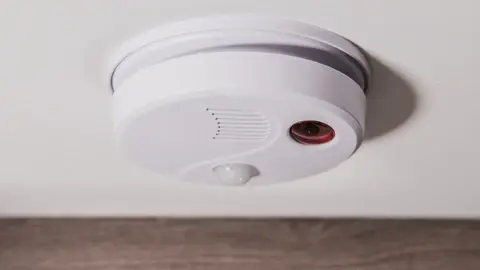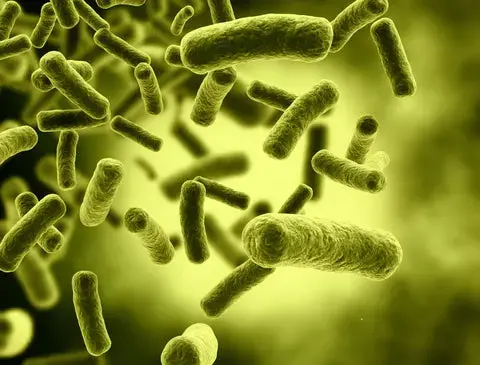5 Common Indoor Air Pollutants and their Sources
- Jennifer Crowley
- Aug 2, 2023
- 6 min read
Updated: Jul 10, 2024

We tend to think that the indoors are safe than outside. However, the Environmental Protection Agency (EPA) says that the air in homes and other buildings can be more seriously polluted than the outdoor air. Indoor air pollutants can cause significant health problems.
People who may be exposed to indoor air pollutants for the most prolonged periods are often those most at risk of the effects of indoor air pollution. This includes children, older adults, and people with long-term (chronic) illnesses. Indoor air quality is affected by pollutants from within and outside an enclosed space.
Common indoor air pollutants include:
Indoor Particulate Matter
Carbon Monoxide
Volatile Organic Compounds
Asbestos
Biological Pollutants
1. Indoor Particulate Matter

What is Indoor PM?
Particulate matter is a complex mixture of solid and/or liquid particles suspended in the air and is found in all indoor environments. However, particles, especially 10 micrometres in diameter or smaller, are exceptionally concerning because these particles are inhalable.
Common Health Effects
Exposure to inhalable particles can affect both your lungs and your heart. Small particles, less than 10 micrometres in diameter, get deep into your lungs and possibly into the bloodstream. People with heart or lung diseases such as coronary artery disease, congestive heart failure, asthma or chronic obstructive pulmonary disease (COPD), children and older adults may be at greater risk from PM exposure.
PM exposure is also linked to a variety of health impacts, including:
Eye, nose and throat irritation
Aggravation of coronary and respiratory disease symptoms
Premature death in people with heart or lung disease
Sources of Indoor PM
It’s important to understand that the PM found indoors includes particles that come from outdoor air and particles. Common sources of Indoor PM include:
Indoor dust
Cooking
Combustion activities:
Burning candles
Use of fireplaces
Use of unvented space heaters
Kerosene heaters
Tobacco
Other smoking products
Printers
Biological contaminants
Mould
Plants
Pests
Animals
How to reduce exposure to Indoor PM
The best way to reduce PM indoors is by removing its sources. Examples are:
Outdoor air:
Keep windows closed when outdoor pollutants (i.e. car exhaust, smoke, road dust, pollen, factory emissions, wildfires) are high
Use portable air cleaners
Install higher efficiency filters in your HVAC and ventilation system
Indoor dust:
Frequently clean and ventilate
Regularly change HVAC filters
Upgrade HVAC filters
Cooking:
Improve ventilation and filtration during cooking can reduce exposure to indoor PM
Ensure to turn on a wall or ceiling exhaust fan and open windows or doors (when safe)
Vent the range hood to the outdoors
Combustion:
Prohibit indoor smoking
Ensure proper ventilation when burning candles
Do not use wood-burning appliances indoors
Biological contaminants:
Keep windows closed on high pollen days
Frequent cleaning
Prevent mould, dust mites and cockroaches
2. Carbon Dioxide (CO2)

What is Carbon Dioxide?
Carbon dioxide is an odourless, colourless and toxic gas; and is impossible to see, taste or smell the toxic fumes. Effects of CO2 exposure can vary significantly from person to person depending on age, health, concentration and length of exposure.
The average outdoor air concentration of CO2 is in the order of 300 to 400 ppm. Indoor levels are usually higher due to the CO2 exhaled by building occupants. Indoor combustion appliances, particularly gas stoves, can also increase CO2 levels.
Common Health Effects
Depending on the extent of exposure to CO2 and the level of concentration, various health effects are possible.
At low concentrations, it is common for healthy people to feel fatigued. For people with heart disease, it is common to experience chest pain.
At moderate concentration, individuals can experience the following;
Angina
Impaired vision
Reduced brain function
At higher concentrations, CO2 can be fatal. Individuals can experience the following;
Impaired vision and coordination
Headaches
Dizziness
Confusion
Nausea
Flu-like symptoms that clear up after leaving home
Fatal at very high concentrations
Sources of Carbon Dioxide
Indoors, CO2 is mainly produced through the respiration (breathing) of occupants, but can also come from:
Cigarette smoking
Unvented or poorly vented fuel-burning appliances
Leaking chimneys and furnaces
Outdoor sources of CO2 that are also found indoors include;
Forest fires
Combustion of fossil fuels
Animal and plant respiration
Organic matter decomposition
The level of CO2 in indoor air depends on three main factors:
Ventilation
Indoor sources of CO2
The outdoor CO2 concentration
How to reduce exposure to Carbon Dioxide
You can lower levels of CO2 indoors by increasing ventilation and controlling the sources of CO2.
Consider purchasing a vented space heater when replacing an unvented one
Install and use an exhaust fan vented to the outdoors over gas stoves
Opening windows when possible
3. Volatile Organic Compounds (VOCs)

What are Volatile Organic Compounds?
Volatile organic compounds (VOCs) are emitted as gases from certain solids or liquids. Concentrations of many VOCs are consistently higher indoors (up to ten times higher) than outdoors. Organic chemicals are widely used as ingredients in household products. Paints, varnishes and wax all contain organic solvents, as do many cleaning, disinfecting, cosmetic, degreasing and hobby products. Fuels are made up of organic chemicals. All of these products can release organic compounds while you are using them and, to some degree, when they are stored.
Common Health Effects
The ability of organic chemicals to cause health effects varies greatly from those highly toxic to those with no known health effects. As with other pollutants, the extent and nature of the health effect will depend on many factors, including the level of exposure and length of time. Among the immediate symptoms that some people experience soon after exposure to some organics includes:
Eye and respiratory tract irritation
Headaches
Dizziness
Visual disorders and memory impairment
Exposure to some VOCs can cause:
Fatigue
Nausea
Dizziness
Headaches
Breathing problems
Irritation of the eyes, nose and throat
Children, seniors, pregnant people and people with existing health conditions, such as asthma, chronic pulmonary disease or bronchitis, are at greater risk.
Sources of Volatile Organic Compound
Cooking, especially frying
Cigarette smoke
Candles and incense
Composite wood products, such as some furnishings and flooring materials
Building materials such as paint, glues and varnish
Household products, such as air fresheners and cleaning products
Infiltration from attached garages, such as from vehicle exhaust
Combustion sources such as improperly vented fireplaces, wood stoves, gas stoves and furnaces
How to reduce exposure to Volatile Organic Compounds
You can reduce exposure to VOCs in your home by:
Increasing ventilation when using products that emit VOCs
Meeting or exceeding any label precautions
Use integrated pest management techniques to reduce the need for pesticides
Use household products according to the manufacturer’s directions
4. Asbestos

What is Asbestos?
Asbestos is a naturally occurring mineral fibre that was commonly used in building materials for insulation and fireproofing due to its durability and resistance to heat. However, it is hazardous when its fibres become airborne and are inhaled, which can lead to serious respiratory diseases such as asbestosis, lung cancer, and mesothelioma.
Common Health Effects
Breathing in asbestos fibres can cause cancer and other diseases, such as:
Asbestosis - Scarring of the lungs, which makes it difficult to breathe
Mesothelioma - A rare cancer of the lining of the chest or abdominal cavity
Lung cancer
Sources of Asbestos
Asbestos is found in:
Building materials:
Roofing shingles
Ceiling and floor tiles
Paper products
Asbestos cement products
Friction products:
Automobile clutch
Automobile brake
Transmission parts
Heat-resistant fabrics
Packaging
Gaskets
Coatings
How to reduce exposure to Asbestos
In a workplace setting, you should report any damage to materials containing asbestos to the appropriate authority, such as your occupational health and safety manager. Additionally, Public and commercial building owners should keep an inventory of asbestos-containing materials to inform tenants, management and contractors.
In your home, you can reduce your risk of exposure by hiring a professional to test for asbestos before doing any:
Renovations or remodelling
Demolitions
Additions
If a professional finds asbestos, hire a qualified asbestos removal specialist to remove it before beginning work.
5. Biological Pollutants

What are Biological Pollutants?
Biological contaminants include bacteria, viruses, animal dander and cat saliva, house dust, mites, cockroaches, and pollen. Relative humidity of 30-50 percent is generally recommended for homes. Standing water, water-damaged materials or wet surfaces also serve as a breeding ground for moulds, mildews, bacteria and insects. House dust mites, the source of one of the most powerful biological allergens, grow in damp, warm environments.
Common Health Effects
Biological pollutants can trigger allergic reactions, such as hypersensitivity pneumonitis, allergic rhinitis and asthma.
Common health symptoms caused by biological pollutants are:
Sneezing
Watery eyes
Coughing
Shortness of breath
Dizziness
Lethargy
Fever
Digestive problems
Children, the elderly and people with breathing problems, allergies, and lung diseases are particularly susceptible to disease-causing biological agents in the indoor air.
Sources of Biological Pollutants
Biological contaminants are or are produced by living things. For example, biological contaminants are often found in areas that provide food, moisture, or water.
Common sources:
Bacteria are carried by people, animals, and soil and plant debris
Mould
Pollens, which originate from plants
Viruses, which are transmitted by people and animals
Household pets, which are sources of saliva and animal dander (skin flakes)
Viruses and bacteria
How to reduce exposure to Biological Pollutants
To reduce exposure to such biological contaminants, maintain good housekeeping and regulate heat and air conditioning equipment. Adequate ventilation and good air distribution also help. The key to mould control is moisture control.
Other tips include:
Install and use exhaust fans in kitchens and bathrooms that are outdoors
Ventilate the attic and crawl spaces to prevent moisture build-up
Keep the house clean

















